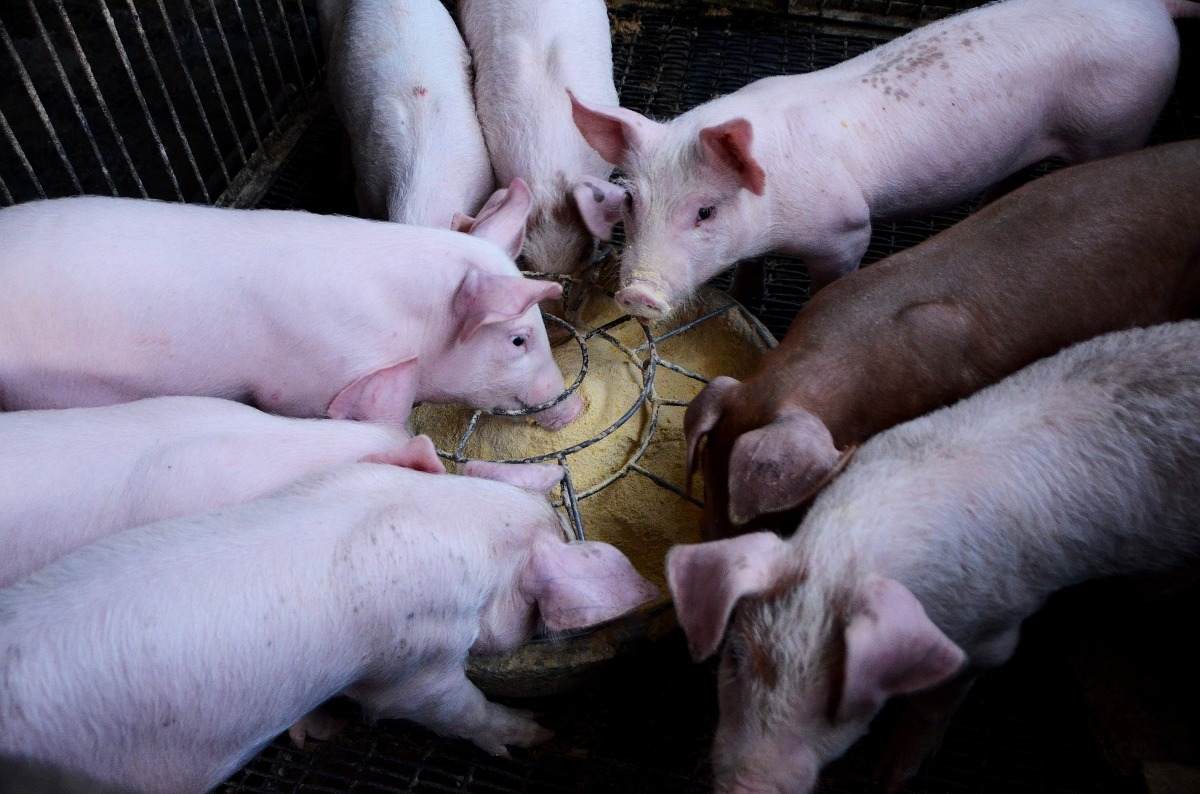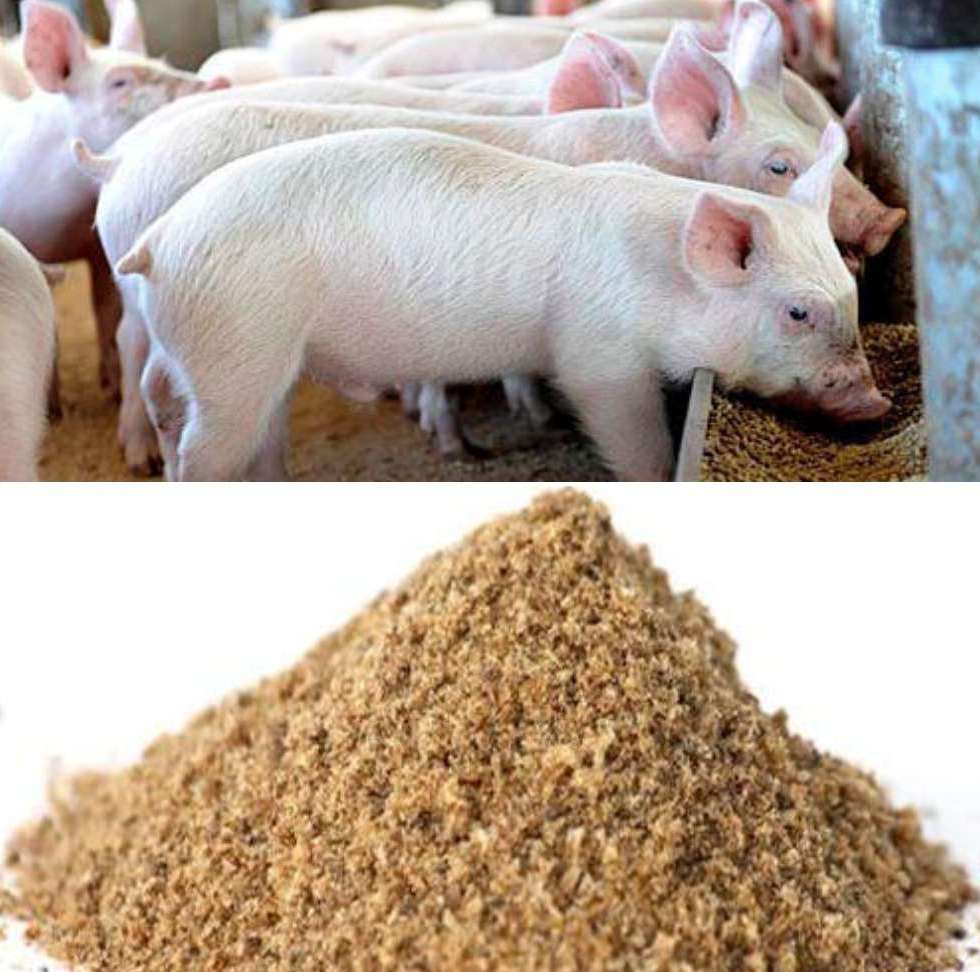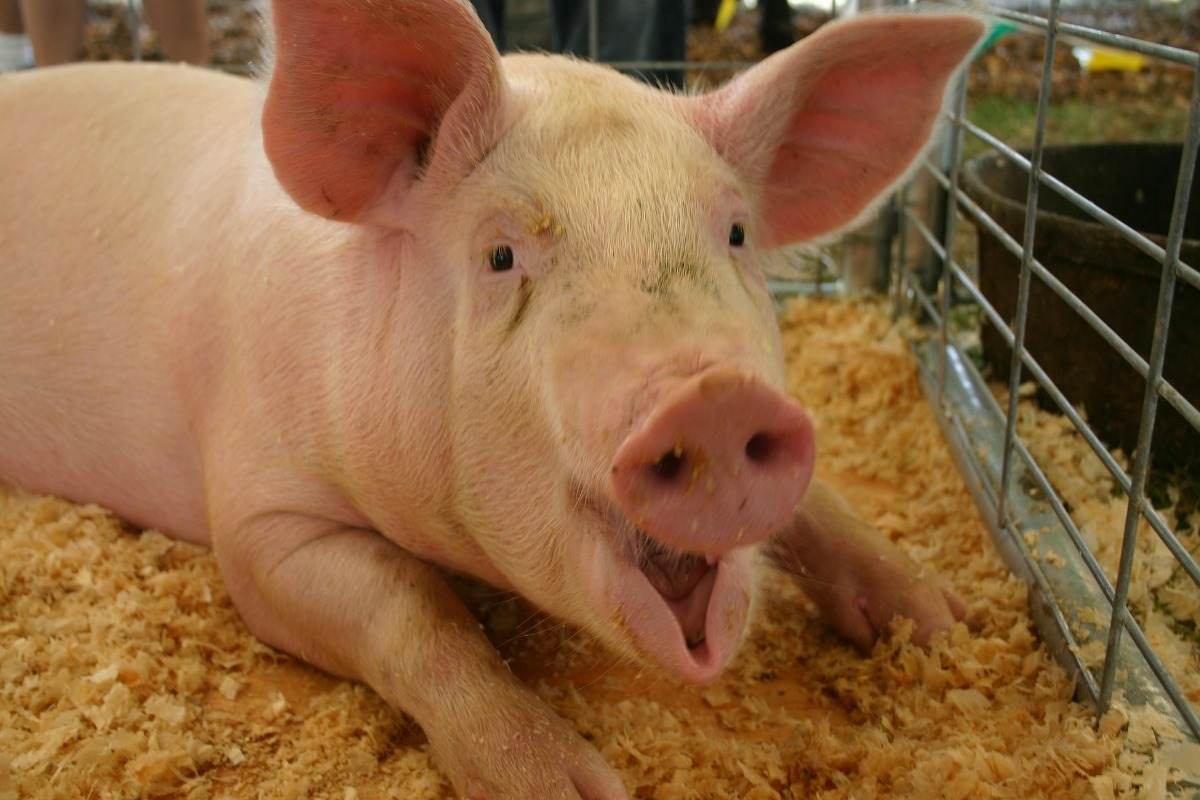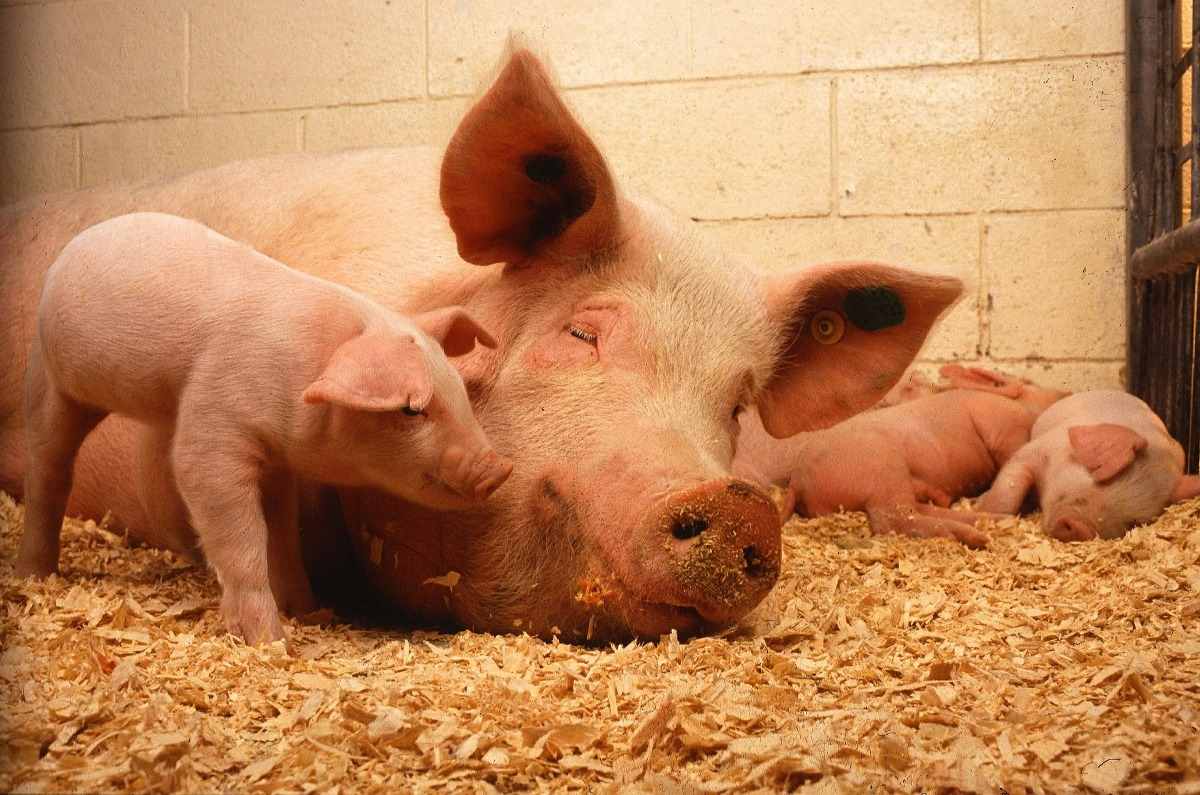Ingredients for Making Pig Feed Pdf
Introduction to pig feed formulation: Hello pig farmers, good pig feed contains a sufficient amount of energy, protein, minerals, and vitamins. Rice bran, broken rice, maize, soya beans, cassava, vegetables and distillers' residues are used in pig feed. Today let us go through the ingredients for making pig feed, fast growing pig feed, best pig feed for weight gain, pig feeding tips, and how to feed pigs cheaply as part of pig feeding guide.
A step by step guide to pig feed formulation
Feed plays an important role in transforming subsistence pig farming into market-oriented pig production. Maximum return or live weight gain within a shorter period is possible if the pigs are fed with nutritionally balanced feed. Depending on the availability of feeds, one can decide whether to go for 'supplementation' or completely depend on nutritionally balanced feed. In both cases, it can be compounded locally using locally obtainable feed ingredients. If the balanced feed is compounded locally, price and quality can be controlled which in turn have an impact on the performance and economics of pig farming.
In this article we also discussed below topics;
- How to feed pigs cheaply
- Ingredients for making pig feed
- Fast-growing pig feed
- Pig feeding tips
- Best pig feed for weight gain
- How many times a day should a pig be fed
- Best food for pigs
- List of foods bad for pigs

Good feed is necessary for growth, body maintenance and the production of meat and also milk. You can use locally obtainable feeds that are less expensive but can be nutritionally complete when properly prepared. Pigs can be fed well-using kitchen scraps from a family's household. The nutritional needs of pigs can be divided into 6 categories or classes. These nutritional needs are water, carbohydrates, fats, proteins, vitamins, and minerals.
Nutritional requirement of growing pigs
Pigs are single stomached or monogastric animals. The main nutrients necessary for growth and reproduction in pigs are energy, protein, vitamins, and minerals. Energy is mainly provided by carbohydrates and lipids. Protein consists of 20 amino acids, of which ten are essential and among them, critical amino acids are lysine and tryptophan. Pigs cannot handle large quantities of forages as they cannot digest a high amount of fiber.
You should not miss the Fish Farming Licesne in India .
Types of pig feeds for pig feed formulation
Different types of pig feeds are given below;
Pig starter or creep feed
A ration intended for suckling piglets from the age of two weeks to about 20 Kg live weight, when the litter is with sow
Pig growth meal
A ration to be fed from weaning to about 35 Kg live weight
Pig finishing meal or breeding meal
A ration intended for pigs over 35 Kg live weight
Pig feed formulation
List of feed ingredients for the formulation of ration for pig;
Creep feed
Creep Feed is the baby piglets' first and it is important to dry food. A combination of protein source, vitamins, amino acids and also rich feed ingredients makes this complete feed the ideal start for young healthy piglets.
Creep feed about 20g per piglet per day is a good home-made mixture with fine rice bran, broken rice, and milled maize grains. Clean drinking water should always be available.
Rice Bran
This is very suitable for pig feeding and it contains 11% protein and can be used as the main ingredient in most feeds. Rice bran can be mixed with other feeds to 30 to 45%. Though, it can be kept for no longer than 1 month because it will become moldy.
Maize
The grain forms the main constituents of the feed. It is a good source of energy. The metabolizable energy is 3400 Kcal/kg. The protein content is about 10% and yellow maize contains carotene. Maize should be properly dried before it can be used for formulation. This is a good animal feed and it contains up to 65% carbohydrates and 9% protein. It could be mixed and cooked with other feeds, but not more than 40% in the mix ration.
Maize offal
It contains about 2500 Kcal ME/kg and it is a complementary source of energy. In this, the fiber level is higher than that of maize.
Wheat offal
It is another complementary source of energy and it is a by-product of wheat after milling. The energy value is low compared to maize and the metabolizable energy is about 1800 Kcal ME/kg.
Cassava
Cassava is a good source of energy and the by-product includes cassava peel, cassava flour, cassava chaff, and sievate. One of the main limitations of using cassava is the presence of anti-nutritional factor, hydrocyanic acid (HCN). Cassava should be properly dried before incorporation with another feed ingredient.
Sweet potato
Sweet potato is a good source of energy. Boiled sweet potato can be given to pig directly. When formulating a diet for pig, dry sweet potato used to replace maize to a large extent.
Broken Rice
This is very suitable for pig feeding. It can be mixed with other feeds up to 15 to 20%. Broken rice contains 8% protein.
Fish Meal
It is a good source of animal protein and it is rich in both essential and non-essential amino-acid. Fish meal used in pig nutrition can be imported or local. The protein content is about 60 and 72% crude protein.
Bone Meal
Bone meal is a good source of calcium and phosphorus which is responsible for bone and skeleton. The calcium content of bone is around 37% and phosphorus content is 17%.
Oyster shell
Oyster shell is a good source of calcium. The oyster shell price is lower than that of bone meal. The calcium content is 35% and contains no phosphorus.
Root Crops
These can be mixed with other feeds up to around 10 to 20% (never more than 30%). First, the crop must be peeled and washed and then sliced, dried and ground before use. It must not be fed to pigs as raw cassava with the skin, due to the toxic substances present. The sliced and dried cassava could be kept for longer.
Make your pig feed
Feed your pigs that are being weaned off of their mother's milk, a special mix of food until they are about 10 to 12 weeks old. Then create a feed mix that is comprised of 76 percent corn, 12 percent skim milk powder, 6 percent soybean meal, 6 percent calcium and protein, and also 0.2 percent salt.
Begin feeding your pigs a grower diet when they are 12 weeks old. Then create a feed mix that is 79 percent sorghum, 10 percent soybean meal, 7 percent calcium and protein supplement, 4 percent sunflower or peanut meal, and 0.25 percent salt.
Feed your breeder pigs a different mix than the rest of pigs. Make a feed mix that is about 80 percent sorghum, 10 percent sunflower meal, 10 percent calcium and protein supplement, and 0.25 percent salt.
Quality of a good pig food contains;
- Pig food should be fresh and not stale.
- It must be a good procedure and packaged.
- The ingredients for the feed should be available at all times.
- The feed should be affordable.
- The digestibility of the feed should be high.
- The feed should support optimum growth and development of pig.
- The feed should be palatable.
- The feed must be balanced in Nutrients.
- It should be attractive and palatable to the pig
- It should not be moldy.
The easiest way to feed pigs
The simplest way to feed a pig is to give grain, such as corn-on-cob, wheat or barley, a protein supplement (alfalfa leaf left over from the hay fed to goats), and a mineral mixture ration in separate compartments of an automatic hog feeder. This pig feeder plus an automatic waterer cuts chore time to the bone. Feed garbage and surplus garden produce etc. in a trough. This you can simply make, especially if you buy iron trough ends. Save garbage in a separate can and keep it free from paper, soap, glass, and dishwater, etc. Don't feed garbage for older than 3 days.
Vitamin C makes pigs grow faster and bigger. By adding ascorbic acid or Vitamin C to the diet of pigs about 800 grams for every kilo of feeds, will make them grow faster compared to those treated with normal diets.
Feeding management for pig farming
You may also like the Drip Irrigation Cost per Acre in India .

- Pigs are monogastric animals and can utilize fibrous food to a limited extent. Adult pigs can use fibrous food better than young stock.
- Part of the protein in the diet of pigs must come from an animal source such as fish, meat, etc.
- Pigs must be fed at regular intervals.
- Fresh feed must be put after removal of the previous feed from the feed trough.
- Pig rearing based on commercial pig feed is not economical and feeding based on swill is recommended. On average, pig requires 4 to 8 kg swill per day.
Traditional feed processing as part of pig feed formulation
Different types of feeds are mixed and boiled to make pig feed more palatable. There are mainly 2 types of traditional processing;
Mixing all the different feeds, for example, rice bran, broken rice, crushed maize and soya, dried legume leaves, etc in proportion and giving it to the pigs.
Cooking the different raw materials together to improve digestibility system, and to breakdown toxins from some feeds, for example, raw cola-cassia, banana stem, maize and soya grains, beans, kitchen waste, forage crops, and similar.
Balancing nutrition as part of pig feed formulation
Because genetics, environment, and feeding patterns of the herd will play a role in nutritional strategy, you will need to have the right diet formula in place to meet those needs. This means developing a feeding that will fit the production needs of the herd. Decide on an assortment of ingredients in formulating the diet for the nutritional program. A balance of energy sources and protein is essential.
Energy sources
- Corn
- Milo
- Wheat
- Barley
- Tallow
Protein sources
- Soybean meal
- Field peas
- Synthetic amino acids
- Canola meal
Daily feed requirements for pig

Dry/pregnant Sows and Gilts – Dry sows and gilts need 2.5kg a day of sow and weaner meal. Provide an extra 1kg/day one week before serving gilts and sows and one week after service. Give lactating sows about 2.5 kg a day of sow and weaner meal for maintenance and 0.25 kg a day extra for each piglet being suckled.
Incase if you forget to read this: Tilapia Fish Farming Cost in India .
Boars – Give boars 2.0 kg a day and if the boar is regularly used increase this to 2.5 kg.
Piglets – Give creep pellets 0.5 to 1.0 kg a day from day 7 up to weaning time (21 days) per piglet. The feed must be mixed with sow and weaner meal the last week before weaning.
Feeding of Growing and Finishing pigs – Pigs weaned at 3 – 5 weeks of 11 – 13 kg body weight must continue being fed on the starter diet until they reach 18 kg of live weight. Pigs weaned at 7 weeks or older can be switched gradually to sow and weaner diet.
Tips on feeding pigs to increase their weight
Pig feeding is a challenging and troublesome work for pig operations when pig farming. But feeding pigs is essential and can be simplified with right feedstuffs and proper feed combination for pig farmers, particularly for those who are keeping pig for profits.
Increasing the weight of a pig requires giving it the correct food. If the pig doesn't gain weight as fast you'd like, you must reduce its fiber intake while adding fat and sugar to its diet. Pig farmers must know what weight of pigs they want to achieve. As the fat content of the pig is measured when sold, and the pig is priced accordingly.
To keep the pig big and healthy, the suitable kind of feedstuffs can be fed with it. The pig farmer, who is dependent on feeds, must not feed their pigs leftovers because the leftovers will ruin the appetite of pigs. It is very important to seek the advice of an expert when feeding pigs, regarding the amount of feed to be given when raising pigs. Also take enough time to consider what feeds the pigs are responding best to, which will help make feeding pigs easier.
The leftover of pigs after eating to be handled to avoid pigs to eat dirty food when the leftovers are not cleaned. A good sanitary habit is essential for pigs to prevent harmful foreign bacteria in their system.
Select the proper pig feeders, because the right feeder can greatly help pig feeding efficiency. Usually, there are many types of pig feeding equipment like automatic cylindric pig feeder used for fattening pigs; dry wet pig feeder suitable for powder and pellet feedstuffs; feed troughs for sows, piglets and fattening pigs.

Foods to avoid for feeding pigs
When creating your pig food mixture, there are certain types of food you will want to avoid for reasons ranging from slowed growth rate to outright toxicity. Here some of the general foods to avoid in pig feed;
- Sweets and high-sugar foods
- Dog food
- Cracked corn
- Milk
- Fish
- Meat
- Fruits
- Potatoes
Foods high in sugars could slow growth rates while milk, meats, and fish can harbor viruses. Pits and seeds of apples, pears, apricots, and peaches have a naturally occurring substance called amygdalin which is a cyanogenic glycoside that is released when chewed causing illness, discomfort, or even death. Potatoes have natural toxins called glycoalkaloids, which can cause severe stomach ache or even death (though rare), and contain solanine which destroys red blood cells, causes diarrhea, and heart failure.
You might be interested in Sheep Farming Guide for Beginners .
Source: https://www.agrifarming.in/pig-feed-formulation-types-of-pig-feed-a-full-guide
0 Response to "Ingredients for Making Pig Feed Pdf"
Post a Comment